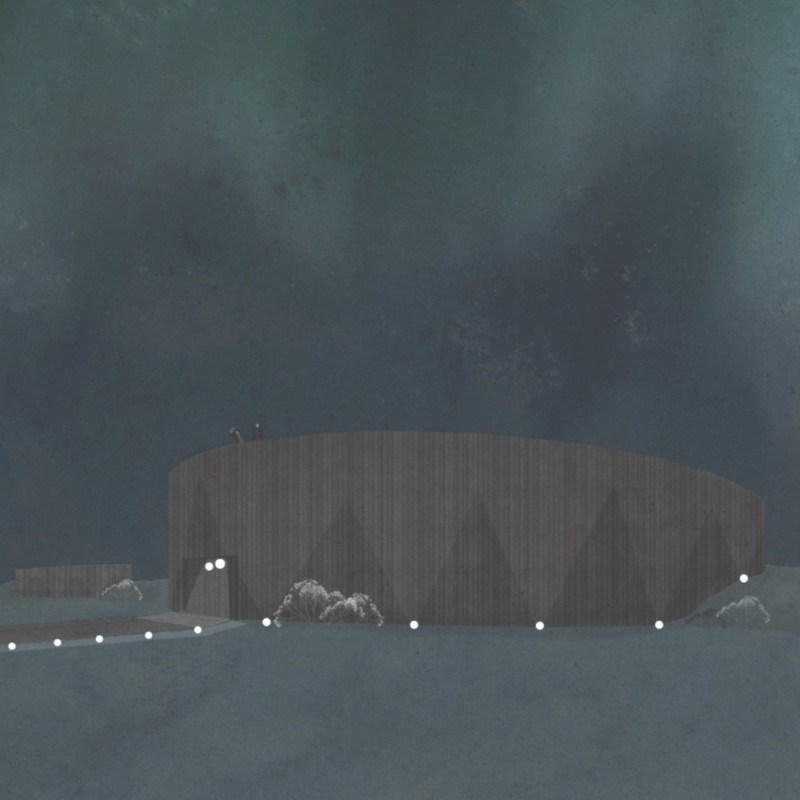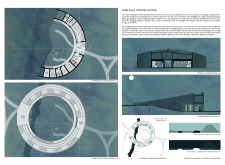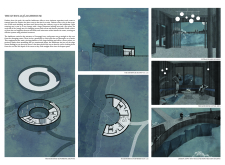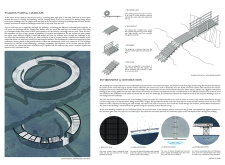5 key facts about this project
The Brú Eilífðarinnar, also known as the eternity bridge, integrates well with its natural surroundings. Located in a landscape characterized by caves and continental plates, the design features two main structures: a larger visitor center and a smaller bathhouse. The concept focuses on clear geometry and how it contrasts with and complements the site, enhancing the overall visitor experience.
ARCHITECTURAL CONCEPT
The design revolves around the relationship between built forms and the natural landscape. The main building encircles the entrances to Karlagjá cave and acts as an elevated observation point, providing broad views of the area. It serves various functions, making it an active center for visitors while connecting the two continental plates. The bathhouse, positioned at the edge of the European plate, offers a unique perspective that emphasizes vertical movement and depth, encouraging exploration.
MATERIALITY
Materiality is important in this design, with the use of black wood prominently displayed on the facades of both buildings. This choice creates a strong visual impact, allowing the structures to stand out against the natural environment. During the day, the dark wood contrasts with the landscape. At night, when illuminated, the buildings take on a warm glow, enhancing their presence and inviting visitors to explore the area.
PATHWAY DESIGN
The design includes a series of pathways that link the buildings to various points of interest in the landscape. These walkways are designed to follow the natural terrain, encouraging visitors to move around the site at a relaxed pace. The thoughtful placement of paths helps people engage with the geological features, inviting exploration of the continental plates and their visual drama.
VIEWING PLATFORMS
An essential aspect of the experience is the arrangement of multiple viewing platforms within the design. These platforms provide different perspectives of the landscape, enhancing visitors' understanding of the geological formations. Each viewpoint encourages observers to look out at both the surroundings and the architecture, fostering a connection between the two and celebrating the area's natural beauty.
Light plays a significant role throughout the day as it moves across the structures. This changing quality enhances the geometric shapes and highlights their relationship with the landscape.






















































